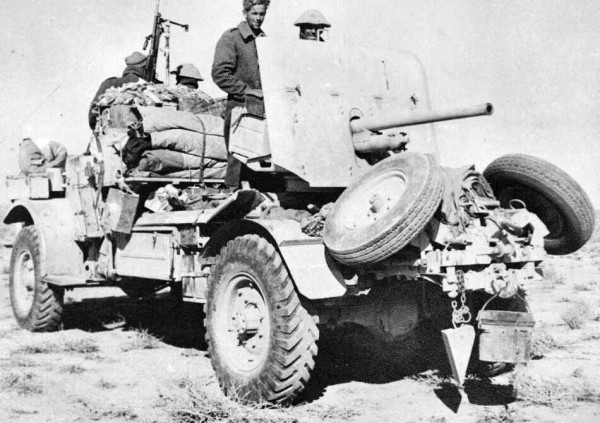Over the years there has been a lot of confusion around British HE for 2pdr and 6pdr guns – especially in the early part of the war. e.g. The 2pdr didn’t have HE, yes it did originally in 1940 but they stopped making it, no it didn’t, yes it did and they even had 11,000 rounds of it siting in storage at the outbreak of World War II – they just never issued it to the troops! Anyway I thought it might be useful (for my sanity and anybody else’s) to collate the facts as known (at least as I now know them), given a lot more information has come to light in the last 10-15 years on the subject. This was partly sparked by a recent YouTube video I watched (on the Matilda) that quoted quite inaccurately the claim that the British had 2pdr HE (in storage in 1939-1941) and never issued it, either through incompetence or criminal negligence!
Continue reading “The Confusion of British 2pdr & 6pdr HE in WW2”Tag: Armour Penetration
U.S. Army 1944 Firing Test No.3
U.S. Army Firing Tests conducted August 1944 by 12th U.S. Army Group at Isigny, France.
Board of Officers
APO 655
30 August 1944
SUBJECT: Final report of board of officers appointed to determine comparative effectiveness of ammunition of 76mm gun and 17pdr gun.
U.S. Army 1944 Firing Test No.2
Firing Tests conducted 12-30 July 1944 by 1st U.S. Army in Normandy.
REPORT OF PROCEEDINGS OF BOARD OF OFFICERS
Organization: Headquarters, First U.S. Army.
Place: APO 230, U.S. Army.
Proceddings of a board of officers which convened at Headquarters, First U.S. Army, pursuant to Special Order No.196, Headquarters, First U.S. Army, 19 July 1944, a copy of which is attached as Exhibit A1.
U.S. Army 1944 Firing Test No.1
Report on Comparative Firing Program Witnessed at Shoeburyness, Essex, 23 May 1944 by U.S. Army Headquarters ETO representatives.
ARMORED FIGHTING VEHICLES & WEAPONS SECTION
APO 887
319.1 – 24 May 1944
MEMORANDUM TO: Executive Officer, AFV&W Section, Hq., ETOUSA.
SUBJECT: Report on Comparative Firing Program Witnessed at Shoeburyness, Essex, 23 May 1944.
Effectiveness of British (& U.S.) Tank Guns
Effectiveness of Guns and typical AFV Ammo Loads in British Service (including some U.S. Types).
This is a 1944 British War Office Document.
Continue reading “Effectiveness of British (& U.S.) Tank Guns”
Determining Shot Penetration Characteristics
The penetration of AP (Armour Piercing) Shot is determined primarily by its weight and velocity at the moment of impact. Other factors can influence it’s velocity (such as wind, pressure and atmospherics), or its ability to “bite” into the armour (e.g. ballistically curved surfaces, such as the T-34 turret or Porsche King Tiger Mantlet, or different shaped projectile heads, can cause rounds to ricochet). Finally the angle of the target’s armour, along with the firer’s angle of shot can affect the relative thickness of armour presented to the round that will need to be penetrated.
Continue reading “Determining Shot Penetration Characteristics”
Table of Compound Angles of Impact


The Angle of Impact on Armour Plate with the Angle of Attack in the Horizontal Plane
Formula: Cosine (Compound Angle) = Cosine (Vertical Angle) x Cosine (Horizontal Angle)
This information above was supplied to me by Jim O’Neil (Arizona, USA), the original source was Lorrin Bird. I’ve added a couple of quick comments below in the Notes section.
Effect of Hardness upon resistance to Penetration
An increase in the hardness of a given thickness of homogeneous armour may result in an increase or in a decrease or in no change at all in resistance to penetration, depending upon the ratio of the thickness of the armour to the calibre of the projectile concerned. Where under-matching projectiles (those whose calibre is less than the thickness of the armour) are concerned resistance to penetration at normal impact increases as hardness increases; where overmatching projectiles (those whose calibre is greater than the thickness of the armour) are concerned, resistance to penetration at normal impact decreases as hardness increases; and where matching projectiles (those whose calibre equals the thickness of the armour) are concerned, little change in resistance to penetration at normal impact occurs over a considerable range in hardness.
Continue reading “Effect of Hardness upon resistance to Penetration”
